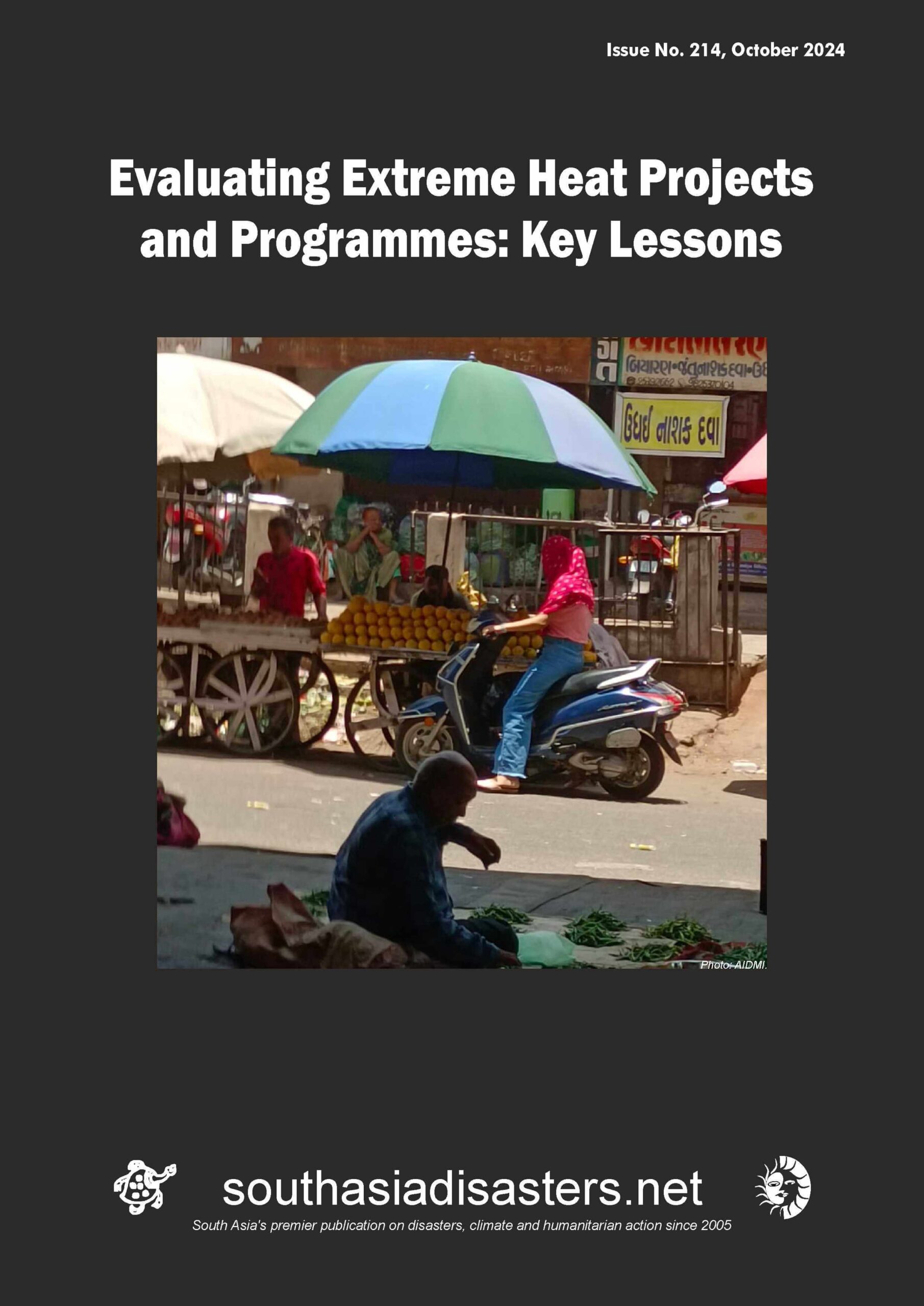Publication | 2 Dec, 2024
Evaluating Extreme Heat Projects and Programmes: Key Lessons
Southasiadisasters.net issue No. 214, October 2024
As 2024 sets new temperature records, this issue of Southasiadisaster.net titled “Evaluating Extreme Heat Projects and Programmes: Key Lessons” provides a deep dive into the growing system-wide risks posed by extreme heat and the innovative strategies being implemented to combat it. It highlights critical topics such as the inadequacy of Celsius-based heatwave measurements, and advocating for the adoption of wet-bulb temperature metrics to better predict heat risks. It explores ground-breaking heat action plans, including ward-level strategies that prioritise vulnerable populations, such as outdoor workers, migrants, and low-income communities. Articles emphasise urban cooling measures like green infrastructure and nature-based solutions to address the urban heat island effect, while grassroots efforts focus on informal workers in cities like Ahmedabad, where extreme heat threatens livelihoods and public health. Further, it examines the intersection of extreme heat and migration, underscoring the challenges faced by displaced populations in temporary shelters. International mechanisms like the Loss and Damage Fund are also discussed, highlighting their potential role in supporting climate adaptation at local levels. These 10 articles are an essential resource for policymakers, researchers, and practitioners dedicated to inclusive, scalable, and equitable humanitarian system-wide solutions for one of the most urgent climate challenges of our time.
IN THIS ISSUE
- Introduction by Dr. Jennifer Doherty, ALNAP, UK
- IRADe’s Climate Adaptive and Inclusive Heat Action Plans for Cities Focused on Vulnerable Communities by Rohit Magotra and Ananya Bhatia, Integrated Research and Action for Development (IRADe), New Delhi, India
- Ditching the Celsius: A Measurement Perspective by Spandan Pandya, Physics Department, Ashoka University, Haryana, India
- Extreme Heat in Cities: How Do We Evaluate New Initiatives? by Pasqualino Tomassi, Co-Chair, IUCN Urban Alliance, Switzerland
- Heatwave Risk Mitigation and Management in Lucknow: A Demand Survey for Informal Sector Workers by Kshitij Gupta, AIDMI, India
- Extreme Heat in Bangladesh: Evaluating Cooling Projects by Shibu Prosad Baidya, Founder & CEO, Barokupot Ganochetona Foundation (BGF), Bangladesh
- No Refuge from Heat: Why Extreme Heat Hurts People on the Move by Amali Tower, Founder, Executive Director, Climate Refugees, USA
- Struggling to Survive: Unheard Voices of Small Businesses on Extreme Heat by Ritwika Chatopadyay, AIDMI, India
- What Needs to Happen on Loss and Damage in 2024 to Address the Impacts of Extreme Heat? by Teo Ormond-Skeaping, Loss and Damage Collaboration’s Advocacy, Outreach and Communications Lead, UK
- Extreme Heat in the Asia Pacific: How to Evaluate Cooling Projects? by Ankit Rathod, Tata Institute of Social Sciences, Mumbai, India
- Extreme Heat and Building Resilience for Cotton Farmers in India by Vishal Pathak, AIDMI, India
- How Should We Evaluate the Extreme Heat Projects: Focus on Inclusion, Democracy, and Extinction! by Mihir R. Bhatt, AIDMI, India
 Back to Co-creating Knowledge
Back to Co-creating Knowledge